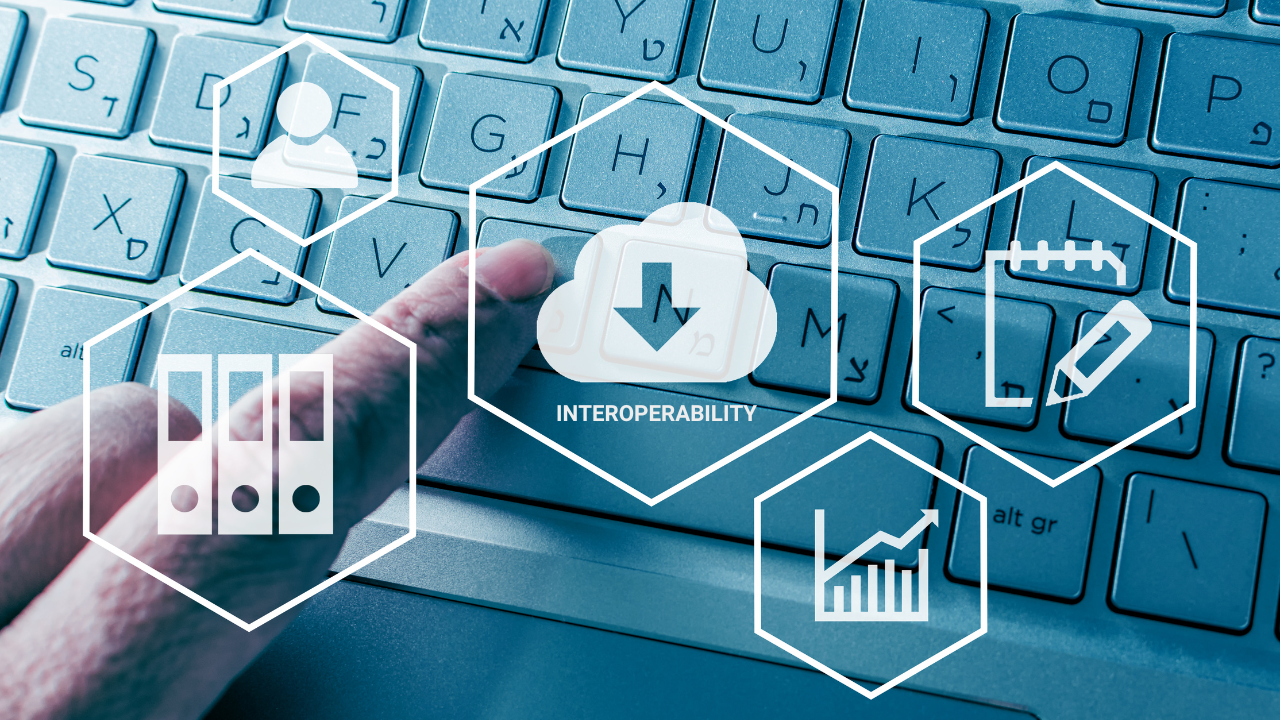Introduction: Why Is Interoperability Key?
In a world where 74% of companies struggle with disconnected systems (Gartner, 2023), interoperability has become a strategic pillar. If you’re unsure how to integrate platforms or eliminate data duplication, this article resolves your doubts with practical examples, trends, and actionable steps.
What Is Interoperability?
Interoperability is the ability of two or more systems to share data and operate cohesively, regardless of their underlying technology. According to the ISO/IEC 2382 standard, it means:
“To communicate, execute programs, or transfer data between functional units without requiring users to understand their unique technical characteristics.”
Problems It Solves:
- Duplicate data across departments.
- Lack of cohesion in critical processes (e.g., logistics and finance).
- Isolated systems slowing decision-making.
Types of Interoperability: Semantic vs. Technical
| Type | Definition | Practical Example |
|---|---|---|
| Semantic Interoperability | Systems uniformly interpret data meaning. | An ERP and CRM sharing “customer” with the same definition (ID, purchase history). |
| Technical Interoperability | Systems connect technically despite different languages or interfaces. | Integrating a Java app with a Python API via WSO2 ESB middleware. |
5 Key Benefits of Interoperability
- Cost Savings: Reduces IT expenses by 30% by eliminating redundancies (IDC, 2024).
- +20% Productivity: Automated workflows between systems (e.g., SAP ↔ Salesforce).
- Regulatory Compliance: Critical for the public sector (digital governance laws) and logistics (GDPR traceability).
- Scalability: Adapt new software without disrupting existing infrastructure.
- Customer Experience: Unified data = personalized, omnichannel service.
Top Industries Using Interoperability
- Healthcare: Shared electronic health records across hospitals.
- Logistics: Real-time tracking of suppliers, warehouses, and carriers.
- Banking: API integration for cross-border payments.
Implementation in 4 Steps
1. Audit: Identify critical systems and friction points (e.g., ERP, CRM, BI).
2. Choose Tools:
-
- Middleware: WSO2 ESB (for message transformation).
- Standards: HL7 (healthcare), EDIFACT (logistics).
3. Message Transformation:
-
-
- Convert formats (XML → JSON) and unify protocols (SOAP → REST).
- Guide: Checklist for Successful Message Transformation.
-
4. Monitoring: Use dashboards to detect real-time failures.
FAQs
Q: Is interoperability only for large enterprises?
A: No. SMEs with 2-3 systems also boost efficiency (e.g., integrating billing and accounting).
Q: What are the risks of ignoring it?
- Missed opportunities: 68% of customers demand omnichannel integration (Forrester, 2023).
- Fines: Non-compliance with regulations like the EU Digital Services Act.
Conclusion: Your Next Step
Interoperability isn’t optional—it’s a competitive necessity in 2024. To start:






